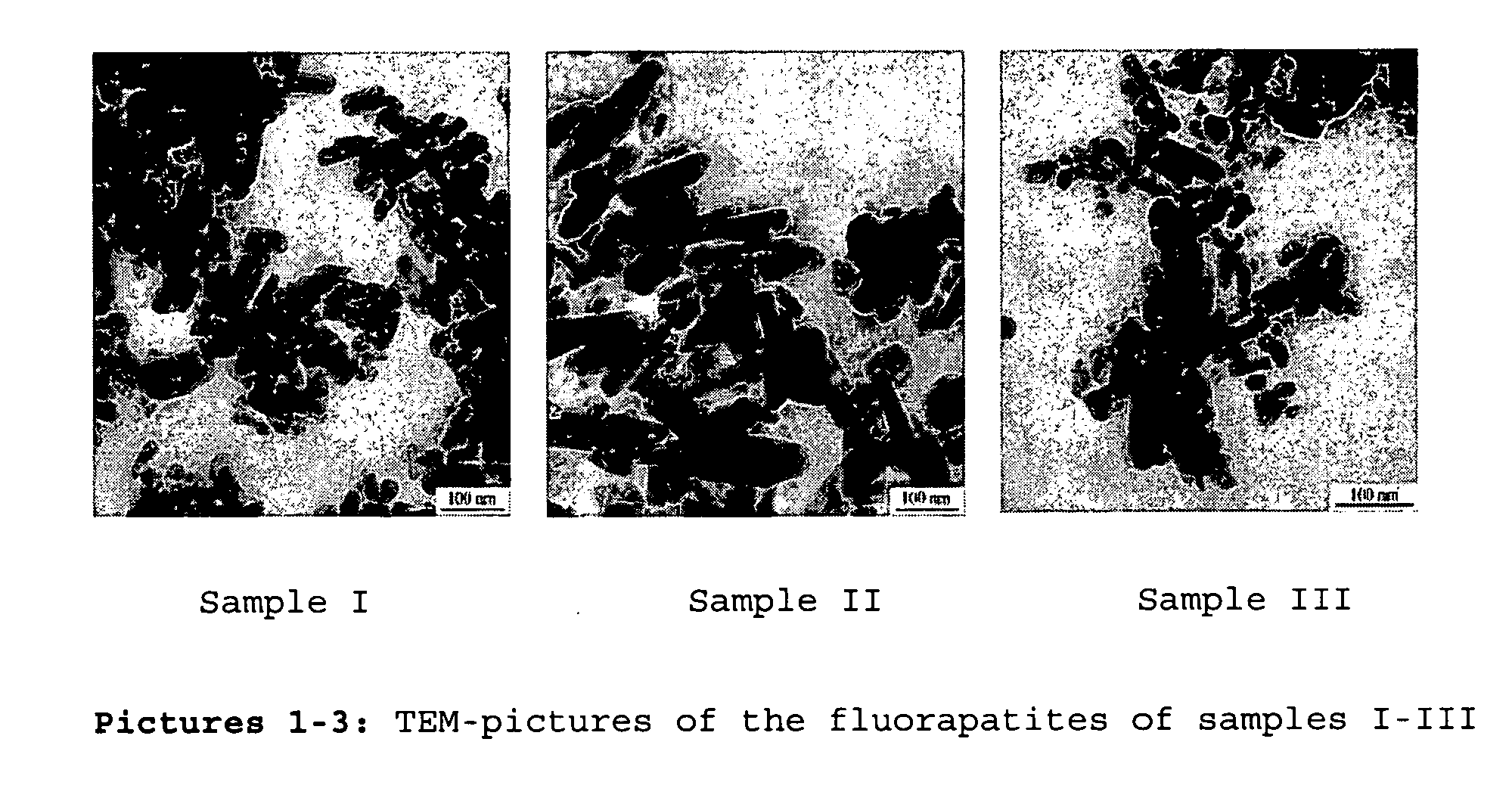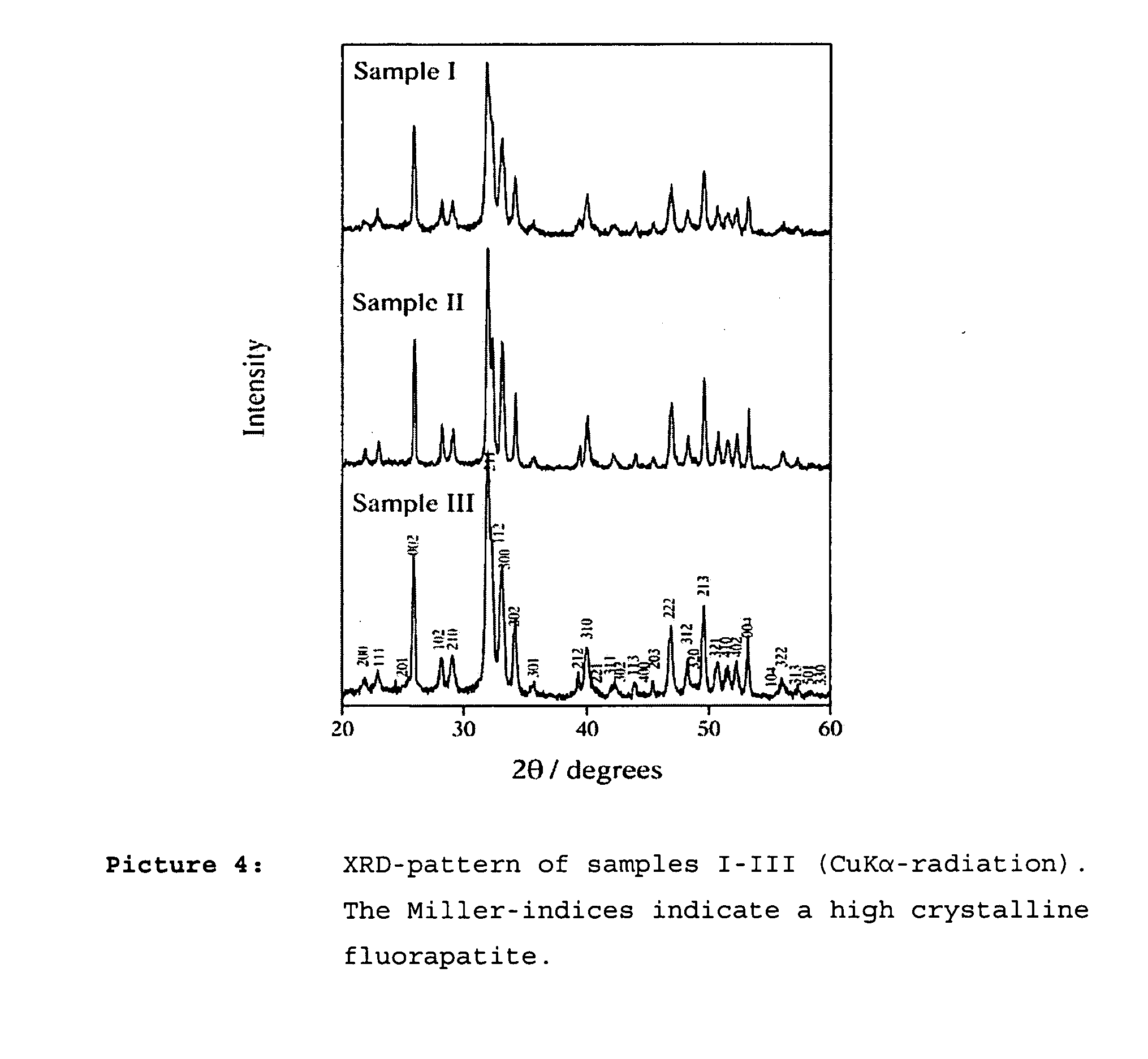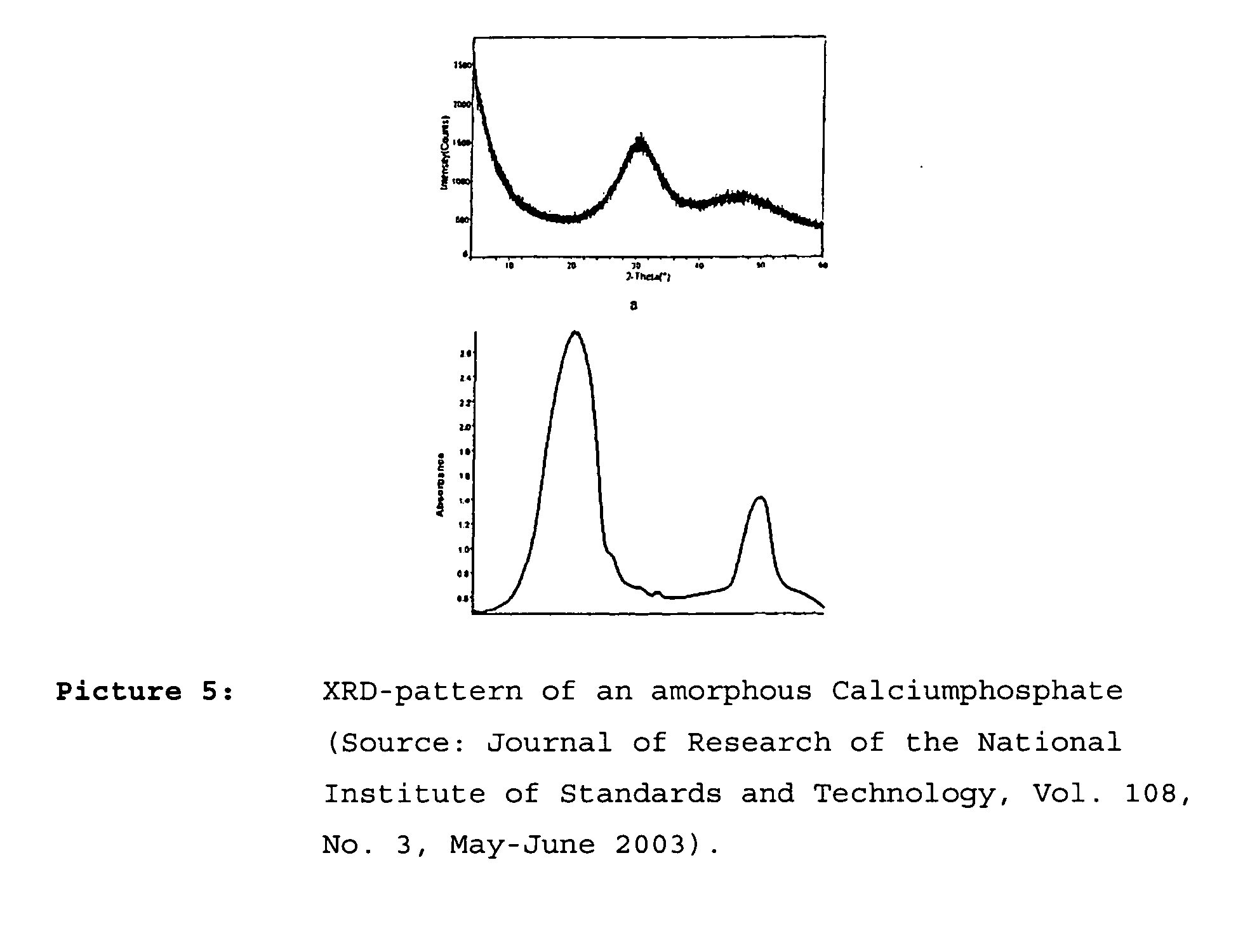Composition containing nano-crystalline apatite
a technology of nanocrystalline apatite and apatite, which is applied in the field of composition containing nanocrystalline apatite, can solve the problems of difficult to achieve the transparency required for dental filling materials, limited ion exchange (calcium, phosphate, etc.) with the environment, and the photopolymerization of these materials
- Summary
- Abstract
- Description
- Claims
- Application Information
AI Technical Summary
Benefits of technology
Problems solved by technology
Method used
Image
Examples
example 1
Preparation of nano-crystalinic Ca-fluorapatite
[0089] Nano-crystalinic fluorapatite was crystalized from ternary micro-emulsion containing Empilan KB6ZA (ethoxylated laurylalcohol, Albright & Wilson, Meuse, France) as non-ionic surfactant, octane as oil phase (Sigma-Aldrich, Schnelldorf, Germany) and a 1.0 M CaCl2 aqueous solution as aqueous phase. The three components were mixed under vigorous magnetic stirring. Three microemulsion compositions with a fixed surfactant to octane ratio of 3:7 at 30°C. (samples I-III) containing 30 (I), 36.36 (II) and 50 (III) wt-% 1.0 M CaCl2 aqeous solution were chosen for preparing the fluorapatite powders. To these solutions a stoichiometric amount of a 0,6 M Na2HPO4 / 0.2 M KF aqueous solution was added, again under vigorous stirring. The mixtures were set aside at 30°C. for 24 h. The powder was separated by washing away the surfactant and oil phase using distilled ethanol and centrifugation. The precipate was washed twice with ethanol and once wi...
example 2
Surface Modification of a Nano Apatite Powder
[0098] 100 g of the nano-apatite powder of sample I was made into a slurry with aceton and treated with 6 g Hydroxyethylphosphoric acid ester under stirring. After 2 hours stirring, centrifugating and washing three times with aceton the obtained powder was dried.
example 3
Preparation of Resin-Composites with Nano Apatite Filler
[0099] Different resin-composites with nano apatite were prepared with the apatite powder of example 2. Thereby, a resin-matrix based on light curing dimethacrylates was prepared with different amounts of fillers (see more down). Specimens of the obtained pastes were prepared, light cured with a Dentacolor XS curing apparatus (Kulzer, Deuschland) and their different properties were examined.
[0100] The resin-matrix was prepared as follows: [0101] 10 parts triethylene glycole dimethacrylate [0102] 10 parts Bis-GMA [0103] 10 parts urethane dimethacrylate [0104] 0,05 parts camphorchinone [0105] 0,05 parts dimethyl aminoethylmethacrylate
[0106] In the present application parts referred to parts by weight unless indicated otherwise.
[0107] 20 parts of the resin matrix were filled with 2 parts of Aerosil 202 and the following filler was worked in additionally:
[0108] FAP 0 (Reference Example)
[0109] 72 parts barium aluminiumborsilic...
PUM
| Property | Measurement | Unit |
|---|---|---|
| particle size | aaaaa | aaaaa |
| size | aaaaa | aaaaa |
| refractive index | aaaaa | aaaaa |
Abstract
Description
Claims
Application Information
 Login to View More
Login to View More - R&D
- Intellectual Property
- Life Sciences
- Materials
- Tech Scout
- Unparalleled Data Quality
- Higher Quality Content
- 60% Fewer Hallucinations
Browse by: Latest US Patents, China's latest patents, Technical Efficacy Thesaurus, Application Domain, Technology Topic, Popular Technical Reports.
© 2025 PatSnap. All rights reserved.Legal|Privacy policy|Modern Slavery Act Transparency Statement|Sitemap|About US| Contact US: help@patsnap.com



